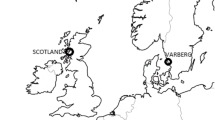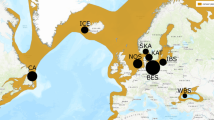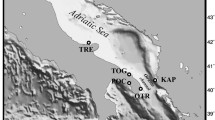Abstract
Determining cryptic species and diversity in at-risk species is necessary for the understanding and conservation of biodiversity. The endangered Banff Springs Snail, Physella johnsoni, inhabits seven highly specialized thermal springs in Banff National Park, Alberta, Canada. However, it has been difficult to reconcile its species status to the much more common Physella gyrina using ecology, morphology and genetics. Here we used pooled whole-genome sequencing to characterize genomic variation and structure among five populations of P. johnsoni and three geographical proximate P. gyrina populations. By comparing over two million single nucleotide polymorphisms, we detected substantial genetic distance (pairwise FST of 0.27 to 0.44) between P. johnsoni and P. gyrina, indicative of unique gene pools. Genetic clusters among populations were found for both species, with up to 10% for P. johnsoni and 30% for P. gyrina of genetic variation being explained by population structure. P. johnsoni was found to have lower genetic diversity compared to P. gyrina, however, no patterns of were observed between genetic diversity and population minimums. Our results confirm that designation of P. johnsoni as an endangered species is warranted and that both P. johnsoni and P. gyrina exhibit microgeographic population genomic structure suggestive of rapid local adaptation and/or genetic drift within environments. This study showcases the utility of genomics to resolve patterns of cryptic species and diversity for effective conservation management. Future studies on the functional genomic diversity of P. johnsoni populations are needed to test for the possible role of selection within this thermal spring environment.




Similar content being viewed by others
Data availability
Detailed bioinformatic pipeline can be found on Protocols.io at: https://doi.org/10.17504/protocols.io.e6nvwk372vmk/v1. Sequencing reads in fastq format can be found on NCBI Sequence Read Archive at: http://www.ncbi.nlm.nih.gov/bioproject/971154 (BioProject ID PRJNA971154).
References
Allendorf FW, Hohenlohe PA, Luikart G (2010) Genomics and the future of conservation genetics. Nat Rev Genet 11:697–709. https://doi.org/10.1038/nrg2844
Beheregaray LB, Caccone A (2007) Cryptic biodiversity in a changing world. J Biol. https://doi.org/10.1186/jbiol60
Bickford D, Lohman DJ, Sodhi NS et al (2007) Cryptic species as a window on diversity and conservation. Trends Ecol Evol 22:148–155. https://doi.org/10.1016/j.tree.2006.11.004
Bilyj M (2011) A study on the phototrophic microbial mat communities of sulphur mountain thermal springs and their association with the endangered, endemic snail Physella johnsoni. University of Manitoba. pp 153
Böhm M, Dewhurst-Richman NI, Seddon M et al (2020) The conservation status of the world’s freshwater molluscs. Hydrobiologia 848:3231–3254. https://doi.org/10.1007/s10750-020-04385-w
Bolger AM, Lohse M, Usadel B (2014) Trimmomatic: a flexible trimmer for Illumina sequence data. Bioinformatics 30:2114–2120. https://doi.org/10.1093/bioinformatics/btu170
Bousset L, Henry PY, Sourrouille P, Jarne P (2004) Population biology of the invasive freshwater snail Physa acuta approached through genetic markers, ecological characterization and demography. Mol Ecol 13:2023–2036. https://doi.org/10.1111/j.1365-294X.2004.02200.x
Bouzat JL (2010) Conservation genetics of population bottlenecks: the role of chance, selection, and history. Conserv Genet 11:463–478. https://doi.org/10.1007/s10592-010-0049-0
Britton DK, McMahon RF (2004) Environmentally and genetically induced shell-shape variation in the freshwater pond snail Physa (Physella) virgata (Gould, 1855). Am Malacol Bull 19:93–100
Butchart SHM, Walpole M, Collen B et al (2010) Global biodiversity: indicators of recent declines. Science 328:1164–1168. https://doi.org/10.1126/science.1187512
Ceballos G, Ehrlich PR (2002) Mammal population losses and the extinction crisis. Science 296:904–907
Clench WJ (1926) Three new species of Physa. Occas Pap Mus Zool 168:1–8
Cook CN, Sgrò CM (2017) Aligning science and policy to achieve evolutionarily enlightened conservation. Conserv Biol 31:501–512. https://doi.org/10.1111/cobi.12863
COSEWIC (2008) COSEWIC assessment and update status report on the Banff Springs snail Physella johnsoni in Canada. Comm Status Endanger Wildl Can Ottawa: vii + 53 pp
COSEWIC (2018) COSEWIC status appraisal summary on the Banff Springs Snail Physella johnsoni in Canada. Comm Status Endanger Wildl Can Ottawa: xxvi pp
Cowie RH, Regnier C, Fontaine B, Bouchet P (2017) Measuring the sixth extinction: what do mollusks tell us? Nautilus 131:3–41
Craze PG, Barr AG (2002) The use of electrical-component freezing spray as a method of killing and preparing snails. J Molluscan Stud 68:191–192. https://doi.org/10.1093/mollus/68.2.191
Cruickshank TE, Hahn MW (2014) Reanalysis suggests that genomic islands of speciation are due to reduced diversity, not reduced gene flow. Mol Ecol 23:3133–3157. https://doi.org/10.1111/mec.12796
Djuikwo-Teukeng FF, Da Silva A, Njiokou F et al (2014) Significant population genetic structure of the cameroonian fresh water snail, Bulinus globosus, (Gastropoda: Planorbidae) revealed by nuclear microsatellite loci analysis. Acta Trop 137:111–117. https://doi.org/10.1016/j.actatropica.2014.04.014
Emerson KJ, Merz CR, Catchen JM et al (2010) Resolving postglacial phylogeography using high-throughput sequencing. Proc Natl Acad Sci U S A 107:16196–16200. https://doi.org/10.1073/pnas.1006538107
Enns A, Kraus D, Hebb A (2020) Ours to save: the distribution, status and conservation needs of Canada’s endemic species. NatureServe Canada and Nature Conservancy of Canada, pp 75
Fišer C, Robinson CT, Malard F (2018) Cryptic species as a window into the paradigm shift of the species concept. Mol Ecol 27:613–635. https://doi.org/10.1111/mec.14486
Fuentes-Pardo AP, Ruzzante DE (2017) Whole-genome sequencing approaches for conservation biology: advantages, limitations and practical recommendations. Mol Ecol 26:5369–5406. https://doi.org/10.1111/mec.14264
Funk WC, McKay JK, Hohenlohe PA, Allendorf FW (2012) Harnessing genomics for delineating conservation units. Trends Ecol Evol 27:489–496. https://doi.org/10.1016/j.tree.2012.05.012
Futschik A, Schlötterer C (2010) The next generation of molecular markers from massively parallel sequencing of pooled DNA samples. Genetics 186:207–218. https://doi.org/10.1534/genetics.110.114397
Gautier M, Vitalis R, Flori L, Estoup A (2022) f-Statistics estimation and admixture graph construction with Pool-Seq or allele count data using the R package poolfstat. Mol Ecol Resour 22:1394–1416. https://doi.org/10.1111/1755-0998.13557
Gilbertson CR, Wyatt JD (2016) Evaluation of euthanasia techniques for an invertebrate species, land snails (Succinea putris). J Am Assoc Lab Anim Sci 55:1–5
Government of Canada (2022) Species at Risk Act, S.C. 2002 c. 29. https://laws.justice.gc.ca/eng/acts/s-15.3/page-10.html
Grasby SE, Lepitzki DAW (2002) Physical and chemical properties of the Sulphur Mountain thermal springs, Banff National Park, and implications for endangered snails. Can J Earth Sci 39:1349–1361. https://doi.org/10.1139/e02-056
Grasby SE, van Everdingen RO, Bednarski J, Lepitzki DA (2003) Travertine mounds of the Cave and Basin National historic site, Banff National Park. Can J Earth Sci 40:1501–1513. https://doi.org/10.1139/e03-058
Gu Z (2022) Complex heatmap visualization. iMeta 1:e43. https://doi.org/10.1002/imt2.43
Gu Z, Eils R, Schlesner M (2016) Complex heatmaps reveal patterns and correlations in multidimensional genomic data. Bioinformatics 32:2847–2849. https://doi.org/10.1093/bioinformatics/btw313
Gustafson KD, Kensinger BJ, Bolek MG, Luttbeg B (2014) Distinct snail (Physa) morphotypes from different habitats converge in shell shape and size under common garden conditions. Evol Ecol Res 16:77–89
Hebert PDN (1997) Allozyme divergence in the physid snails of Banff—Evidence for a thermal spring endemic. In Lepitzki 1998, pp 113–121
Hivert V, Leblois R, Petit EJ et al (2018) Measuring genetic differentiation from Pool-seq data. Genetics 210:315–330. https://doi.org/10.1534/genetics.118.300900
Holsinger KE, Weir BS (2009) Genetics in geographically structured populations: defining, estimating and interpreting FST. Nat Rev Genet 10:639–650. https://doi.org/10.1038/nrg2611
Howard SD, Bickford DP (2014) Amphibians over the edge: silent extinction risk of data deficient species. Divers Distrib 20:837–846. https://doi.org/10.1111/ddi.12218
Johnson PD, Bogan AE, Brown KM et al (2013) Conservation status of freshwater gastropods of Canada and the United States. Fisheries 38:247–282. https://doi.org/10.1080/03632415.2013.785396
Joseph LN, Maloney RF, Possingham HP (2009) Optimal allocation of resources among threatened species: a project prioritization protocol. Conserv Biol 23:328–338. https://doi.org/10.1111/j.1523-1739.2008.01124.x
Kofler R, Orozco-terWengel P, de Maio N et al (2011) Popoolation: a toolbox for population genetic analysis of next generation sequencing data from pooled individuals. PLoS ONE. https://doi.org/10.1371/journal.pone.0015925
Kofler R, Pandey RV, Schlötterer C (2011b) PoPoolation2: identifying differentiation between populations using sequencing of pooled DNA samples (Pool-Seq). Bioinformatics 27:3435–3436. https://doi.org/10.1093/bioinformatics/btr589
Lepitzki DAW (1998) The ecology of Physella johnsoni, the threatened Banff Springs snail. Herit Resour Conserv - Aquat i:146
Lepitzki DAW, Pacas C (2007) Recovery strategy and action plan for the Banff Springs snail (Physella johnsoni) in Canada. Species at Risk Act Recovery Strategy Series. Parks Canada Agency, Ottawa: vii + 61 pp
Lepitzki DAW, Pacas C (2010) Recovery strategy and action plan for the Banff Springs snail (Physella johnsoni) in Canada. Species Risk Act Recovery Strategy Ser Parks Can Agency Ott vii + 63 pp
Li H, Durbin R (2009) Fast and accurate short read alignment with Burrows-Wheeler transform. Bioinformatics 25:1754–1760. https://doi.org/10.1093/bioinformatics/btp324
Li H, Handsaker B, Wysoker A et al (2009) The sequence alignment/map format and SAMtools. Bioinformatics 25:2078–2079. https://doi.org/10.1093/bioinformatics/btp352
Lovell SF, Lein MR, Rogers SM (2021) Cryptic speciation in the Warbling Vireo (Vireo gilvus). Ornithology 138:1–16. https://doi.org/10.1093/ornithology/ukaa071
Mace GM (2004) The role of taxonomy in species conservation. Philos Trans R Soc Lond B Biol Sci 359:711–719. https://doi.org/10.1098/rstb.2003.1454
Mavárez J, Amarista M, Pointier JP, Jarne P (2002) Fine-scale population structure and dispersal in Biomphalaria glabrata, the intermediate snail host of Schistosoma mansoni, in Venezuela. Mol Ecol 11:879–889. https://doi.org/10.1046/j.1365-294X.2002.01486.x
Mee JA, Bernatchez L, Reist JD et al (2015) Identifying designatable units for intraspecific conservation prioritization: a hierarchical approach applied to the lake whitefish species complex (Coregonus spp). Evol Appl 8:423–441. https://doi.org/10.1111/eva.12247
Moore AC, Burch JB, Duda TF (2014) Recognition of a highly restricted freshwater snail lineage (Physidae: Physella) in southeastern Oregon: convergent evolution, historical context, and conservation considerations. Conserv Genet 16:113–123. https://doi.org/10.1007/s10592-014-0645-5
Morris MRJ, Bowles E, Allen BE et al (2018) Contemporary ancestor? Adaptive divergence from standing genetic variation in Pacific marine threespine stickleback. BMC Evol Biol 18:1–21. https://doi.org/10.1186/s12862-018-1228-8
Ouborg NJ, Pertoldi C, Loeschcke V et al (2010) Conservation genetics in transition to conservation genomics. Trends Genet 26:177–187. https://doi.org/10.1016/j.tig.2010.01.001
Parks Canada Agency (2022) Implementation report: multi-species action plan for Banff National Park of Canada (2017–2022). Species at risk act action plan series. Parks Canada Agency, Ottawa. pp 26
Pauls SU, Nowak C, Bálint M, Pfenninger M (2013) The impact of global climate change on genetic diversity within populations and species. Mol Ecol 22:925–946. https://doi.org/10.1111/mec.12152
Pip E, Franck JPC (2008) Molecular phylogenetics of central canadian Physidae (Pulmonata: Basommatophora). Can J Zool 16:10–16. https://doi.org/10.1139/Z07-112
R Core Team (2022) R: a language and environment for statistical computing. R Foundation for Statistical Computing, Vienna, Austria. https://www.R-project.org/
Régnier C, Fontaine B, Bouchet P (2009) Not knowing, not recording, not listing: numerous unnoticed mollusk extinctions. Conserv Biol 23:1214–1221. https://doi.org/10.1111/j.1523-1739.2009.01245.x
Régnier C, Achaz G, Lambert A et al (2015) Mass extinction in poorly known taxa. Proc Natl Acad Sci U S A 112:7761–7766. https://doi.org/10.1073/pnas.1502350112
Remigio EA, Lepitzki DAW, Lee JS, Hebert PDN (2001) Molecular systematic relationships and evidence for a recent origin of the thermal spring endemic snails Physella johnsoni and Physella wrighti (Pulmonata: Physidae). Can J Zool 79:1941–1950
RStudio Team (2022) RStudio: Integrated development environment for R. RStudio, PBC, Boston, MA. http://www.rstudio.com/http://www.rstudio.com/
Sankurathri CS, Holmes JC (1976) Effects of thermal efffuents on the population dynamics of Physa gyrina Say (Mollusca: Gastropoda) at Lake Wabamun, Alberta. Can J Zool 54:582–590
Santamaría L, Klaassen M (2002) Waterbird-mediated dispersal of aquatic organisms: an introduction. Acta Oecol 23:115–119. https://doi.org/10.1016/S1146-609X(02)01144-X
Schmieder R, Edwards R (2011) Fast identification and removal of sequence contamination from genomic and metagenomic datasets. PLoS ONE 6:e17288. https://doi.org/10.1371/journal.pone.0017288
Schultz JH, Bu L, Kamel B, Adema CM (2020) RNA-seq: the early response of the snail Physella acuta to the digenetic trematode Echinostoma paraensei. J Parasitol 106:490–505. https://doi.org/10.1645/19-36
Shafer ABA, Wolf JBW, Alves PC et al (2015) Genomics and the challenging translation into conservation practice. Trends Ecol Evol 30:78–87. https://doi.org/10.1016/j.tree.2014.11.009
Shaffer ML (1981) Minimum population sizes for species conservation. Bioscience 31:131–134. https://doi.org/10.2307/1308256
Taylor DW (2003) Introduction to Physidae (Gastropoda: Hygrophila); biogeography, classification, morphology. Rev Biol Trop 51:1–287
Van Leeuwen CHA, Huig N, Van Der Velde G et al (2013) How did this snail get here? Several dispersal vectors inferred for an aquatic invasive species. Freshw Biol 58:88–99. https://doi.org/10.1111/fwb.12041
Weiss M, Weigand H, Weigand AM, Leese F (2018) Genome-wide single-nucleotide polymorphism data reveal cryptic species within cryptic freshwater snail species—the case of the Ancylus fluviatilis species complex. Ecol Evol 8:1063–1072. https://doi.org/10.1002/ece3.3706
Wethington AR, Guralnick R (2004) Are populations of physids from different hot springs distinctive lineages? Am Malacol Bull 19:135–144
Wethington AR, Lydeard C (2007) A molecular phylogeny of Physidae (Gastropoda: Basommatophora) based on mitochondrial DNA sequences. J Molluscan Stud 73:241–257. https://doi.org/10.1093/mollus/eym021
Wethington AR, Lydeard C (2019) Chap. 33: Physidae Fitzinger. In: Lydeard C (ed) Cummings, KS, editiors. Freshwater mollusks of the world: a distribution atlas. Johns Hopkins University Press, Baltimore, pp 175–178
Wickham H (2016) ggplot2: elegant graphics for data analysis. Springer, New York. https://ggplot2.tidyverse.org
Acknowledgements
The authors thank J Bokvist and J Harrison for their invaluable assistance in the field and lab. The analyses presented here were made possible due to helpful discussions and guidance from J Bull, D Clake, S Dennenmoser, P Gordon, J Harrison, and especially T Barry. While this research occurred after the November 2013 death of C Pacas, Aquatics Specialist, Banff National Park and Chair of the recovery team, he was instrumental in laying the groundwork for its initiation and was a true champion of aquatic conservation. This work was funded by Parks Canada, Natural Sciences and Engineering Research Council of Canada (NSERC) PGS-D held by BCMS, and an NSERC Discovery Grant held by SMR. We would like to respectfully acknowledge that this research occurred on the traditional territories of the Siksikaitsitapi - Blackfoot Confederacy (comprising of the Siksika, Peigan-Piikani, Aamskapi Pikuni, and Kainai First Nations); the Iyarhe (Stoney) Nakoda First Nation (including the Chiniki, Bearspaw, and Goodstoney First Nations); the Tsuut’ina First Nation, the Métis Nation of Alberta; and the Ktunaxa First Nations.
Author information
Authors and Affiliations
Contributions
Research conceptualization- all authors. Fieldwork - BCMS and DAWL. Laboratory work and bioinformatic analyses - BCMS. Original manuscript draft - BCMS and SMR. Manuscript edits and review - all authors.
Corresponding author
Ethics declarations
Competing interests
The authors declare no competing interests.
Additional information
Publisher’s Note
Springer Nature remains neutral with regard to jurisdictional claims in published maps and institutional affiliations.
Rights and permissions
Springer Nature or its licensor (e.g. a society or other partner) holds exclusive rights to this article under a publishing agreement with the author(s) or other rightsholder(s); author self-archiving of the accepted manuscript version of this article is solely governed by the terms of such publishing agreement and applicable law.
About this article
Cite this article
Stanford, B.C., Lepitzki, D.A., Taylor, M.K. et al. Pooled whole genome sequencing of the endangered Banff Springs Snail, Physella johnsoni, reveals genetic separation to P. gyrina and cryptic micro-geographical genetic structure. Conserv Genet 24, 783–791 (2023). https://doi.org/10.1007/s10592-023-01538-x
Received:
Accepted:
Published:
Issue Date:
DOI: https://doi.org/10.1007/s10592-023-01538-x




